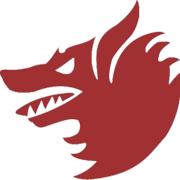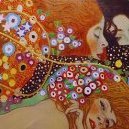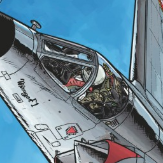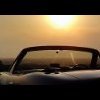All Activity
- Past hour
-
 patricksparks reacted to a post in a topic:
TBD-1, VT-5, Coral Sea
patricksparks reacted to a post in a topic:
TBD-1, VT-5, Coral Sea
-
 patricksparks reacted to a post in a topic:
Trumpeter P-47D-22-RE Thunderbolt "Stalag Luft III/Button Nose" 62nd FS, 56th FG
patricksparks reacted to a post in a topic:
Trumpeter P-47D-22-RE Thunderbolt "Stalag Luft III/Button Nose" 62nd FS, 56th FG
-
 patricksparks reacted to a post in a topic:
F-108 Rapier.....it's here.
patricksparks reacted to a post in a topic:
F-108 Rapier.....it's here.
-
 patricksparks reacted to a post in a topic:
1:32nd scale Caudron G.3 (Anzani engine)
patricksparks reacted to a post in a topic:
1:32nd scale Caudron G.3 (Anzani engine)
-
 patricksparks reacted to a post in a topic:
1/18 Scale P-51B 3D Print Build
patricksparks reacted to a post in a topic:
1/18 Scale P-51B 3D Print Build
-
 patricksparks reacted to a post in a topic:
SW Imperial Tie Fighter
patricksparks reacted to a post in a topic:
SW Imperial Tie Fighter
-
 rafju reacted to a post in a topic:
1/32 Revell SA330 Puma
rafju reacted to a post in a topic:
1/32 Revell SA330 Puma
-
 europapete reacted to a post in a topic:
An actual model shop to visit!
europapete reacted to a post in a topic:
An actual model shop to visit!
-
 Javlin1 reacted to a post in a topic:
Make the others jealous
Javlin1 reacted to a post in a topic:
Make the others jealous
-
 geoawelch reacted to a post in a topic:
A Great Discussion on Airbrush Basics and Cleaning Your Brush with The Nozzle Jet Wash- and Lawn Dart-Maneuvers
geoawelch reacted to a post in a topic:
A Great Discussion on Airbrush Basics and Cleaning Your Brush with The Nozzle Jet Wash- and Lawn Dart-Maneuvers
-

AV-8B+ TAV-8B USMC Dark camouflage pattern
red Dog replied to Piero's topic in Aviation Discussion & Research
i'll need it as well for my soon to be on the benck 1/18 Harrier - Today
-
MiniArt kits are notoriously known for their very tight tolerance in the location pegs. Just enlarge the slots a bit and they’ll fit with a click.
-
I’d suggest you compare the details of the final and painted assembly of 20 parts with the alternative comprising of 3-4 parts. May be those who moan and whine won’t see the difference but hell, what do I know
-
I say off too.
-
Have I missed something? Do we know for a fact that Kotare are planning a Hurricane series?
-
What's the point? The Kotare offering will be better in every metric but will cost 2~3 times as much. Can tell you that now without having even seen the Kotare Hurricane annoucement. Just compare the Spitfires.
-

PCM Macchi 200 Saetta ( Lightning bolt)
reconspit replied to MikeMaben's topic in Ready for Inspection
It looks marvelous…, very nice one….😍 -
IS the new Airfix 1/24 Spitfire THE BEST 1/24 aircraft kit???
geoawelch replied to scorvi's topic in LSP Discussion
Are there any other worthy 109 options in 1/24? -
I hope their plane kits are better than their armor - twenty parts when three or four suffice😂
-
Serkan Sen started following 1/32 Mig-25_Foxbat PD
-
IMO MiniArt is one of the best manufacturers of 1/48th airplane kits along with Eduard and Airfix. I’ve built 3 of their P-47 D bubble tops and am currently doing their Junkers F13, everyone with utter pleasure.
-
There's some logic to that especially as it would allow an A/B airframe to be done, but I imagine the extra design and printing time would double the price. It would mean doing both early and later A-7E configurations (seat, DECM). And we'd be at the point of buying the Trumpeter kit for just the wing, which would be wasteful and annoying. ResKit does need to make a Shrike set with Aero 5 launchers (the very different LAU-34 which they do was USAF/FMS). Tony
-
I watched a programme on the restoration of this aircraft, fascinating. I think it was in the Warbird Workshop series. Cheers Dennis
-
dennismcc started following Happy birthday Guy!
-
All the best have a grand day. Cheers Dennis
-
Hi Chris, The Rhodesians did not operate the Puma. The ones in that war were SAAF aircraft. The intakes are a problem. The ones in the Revel boxing are too small. There are also around 3 different designs of the round filters. The round filters were fitted to Pumas with the uprated engines and the whole cowling was larger. These normally go with the composite blades. The SAAF operated the C,H and L versions. The kit is basically correct for the C . The L needs the squared off spontoons and also a square sand filter. The H model has the larger engines and thus round filters and composite blades. The most common one used in the Rhodesian war was the L , so you need to scratch the spontoons and a square filter box to be accurate. The kit can be build as a C for a SAAF version during the late seventies. I designed a filter and took measurements from the SAAF Museum only to realize they are too big for the kit and the whole top front fuselage needs rebuilding. ( Plus new blades and spontoons) Unfortunately the Revell boxing is also not very accurate for the version they are trying to depict. This photo from the Rhodesian conflict and shows the config of the H model with the square filter and the square spontoons. Also requires the least scratch building. Cheers Nick
-
But then of course I have Jadlam less than an hour away………
-
Thanks everyone. Much appreciated. Hopefully some free time for a little plastic mangling
-
I'm with birthday boy Guy! I say leave them off - I prefer the unsullied look of the beautiful P-51 without the 'blobs'.
-
And in today's episode of 'it's a small world'! I too was born in Huntington. Yearsley Grove, to be exact. I went to Yearsley Grove primary school - at least for the two years before we moved. ..and I have fond memories of doing exactly the same things as you on Strensall Common!
-
Yes indeed, happy birthday, have a good one.
-
That is a shame.. Rugby Super Models certainly seem very switched on - lots of stock.
-
Have a splendid day Guy!
-
We have the Frome Model Centre not far from us……but the last few times I have visited they haven’t had any of the items in stock that I needed, and we’re talking Swann Morton knife blades amongst other things. I think they survive primarily by online sales. Shame.
-
Happy B-Day!!!
-
Excellent work! Kev
-
Happy Birthday, Guy! Kev









